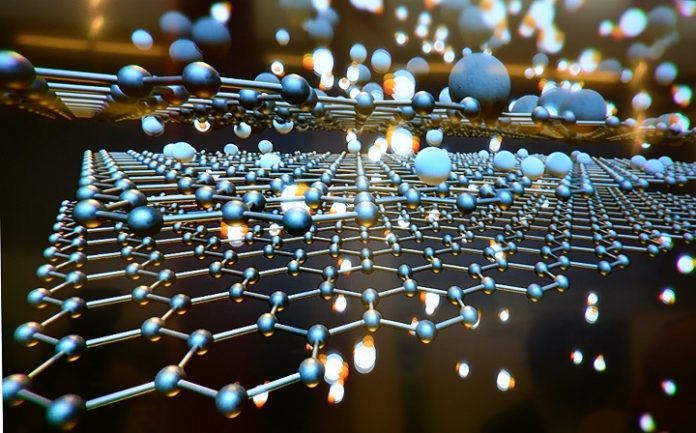As light as possible and as strong as possible at the same time: These are the requirements for modern lightweight materials, such as those used in aircraft construction and the automotive industry.
A research team from Helmholtz-Zentrum Geesthacht (HZG) and Hamburg University of Technology (TUHH) has now developed a new materials’ design approach for future ultralight materials: Nanometer-sized metal struts that form nested networks on separate hierarchical levels provide amazing strength.
When the Eiffel Tower was inaugurated in 1889, it was considered a technical marvel. Its artful and delicate arrangement of large and small iron girders provided extraordinary stability, and it was the world’s tallest building at the time by a long shot. The term “hierarchical” describes the engineering approach of an open array of larger beams braced by smaller ones.
For several years now, material science researchers have tried to transfer this efficient approach to the internal microstructure of materials, for example, by using 3-D printers that can replicate engineering truss structures on a micrometer scale.
So far, hopes of creating a new generation of extremely strong lightweight construction materials have not been fulfilled. One of the reasons: “A 3-D printer can only print a maximum of roughly 10,000 beams, and that will take hours,” says Professor Jörg Weißmüller of the Institute of Materials Mechanics at HZG, co-author of the current publication. “For practical applications, this is not really a viable option.”
Corroding away silver
Nevertheless, his team is pursuing an even more ambitious goal: If beams could be strengthened by downsizing to few nanometers in diameter, they could provide the basis for a new type of material—exceptionally light, and at the same time, strong.
However, this kind of material would have to contain trillions of beams, far exceeding the capability of even the most sophisticated printer. “That is why we have to trick nature into making these kinds of materials for us, simply by self-organization,” Weißmüller’s colleague Dr Shan Shi, lead author of the study, explains.
As a start, the team used an alloy of 93% silver and 7% gold. This alloy is dipped into diluted sulfuric acid, dissolving out approximately half of the silver. As a result, the remaining material rearranges itself, forming a delicate network of nanoscale beams. Afterwards, the material undergoes a heat treatment at several hundred degrees. “This coarsens the network to a beam size of 150 nanometers while maintaining the original architecture,” Shi explains.
During the last step, acid is used to wash out the rest of the silver, leaving only gold beams with a pore size of 15 nanometers on average. The result is a hierarchically structured material with two distinctly different beam sizes, not unlike the Eiffel Tower. As a result of its open network structure, this new material consists of 80 to 90% air, giving it a density of only 10 to 20% of the solid metal.
Amazingly light, amazingly strong
The research group then tested the mechanical properties of their millimeter-sized samples. “In view of this material’s low density, it shows exceptionally high values for key mechanical parameters such as strength and elastic modulus,” Jörg Weißmüller says.
“We have removed much of the mass and left very little, but the material is much stronger than what has been state of the art until now.” This, he said, demonstrates for the first time that a hierarchical structure can be beneficial not only for macroscopic engineering truss structures such as the Eiffel Tower but also for lightweight network materials.
The new material is not yet suitable for applications in lightweight construction—gold is simply too expensive, too heavy and too soft for that purpose. Yet, the new HZG materials design approach could conceivably be transferred to other, more technologically relevant metals like aluminum, magnesium or titanium.
The researchers will then have to face another challenge: So far, they have only been able to manufacture small, millimeter-sized samples. “But it seems entirely feasible to make wires or even whole sheets of metal by our process,” Weißmüller says. “At that point, the material will become interesting in real-life scenarios, for example, in new concepts for vehicles that are lighter and therefore more energy efficient.”








